

 Melody Weng, CBR summer student alum 2022 (right)
Melody Weng, CBR summer student alum 2022 (right)
Tien Do, CBR summer student alum 2022 (middle)
Christina Pan, CBR summer student alum 2022 (left)
Read a version of this story on the Canadian Blood Services’s Research. Education. Discovery. (R.E.D.) blog: 2022 CBR summer students tour the netCAD Blood4Research facility
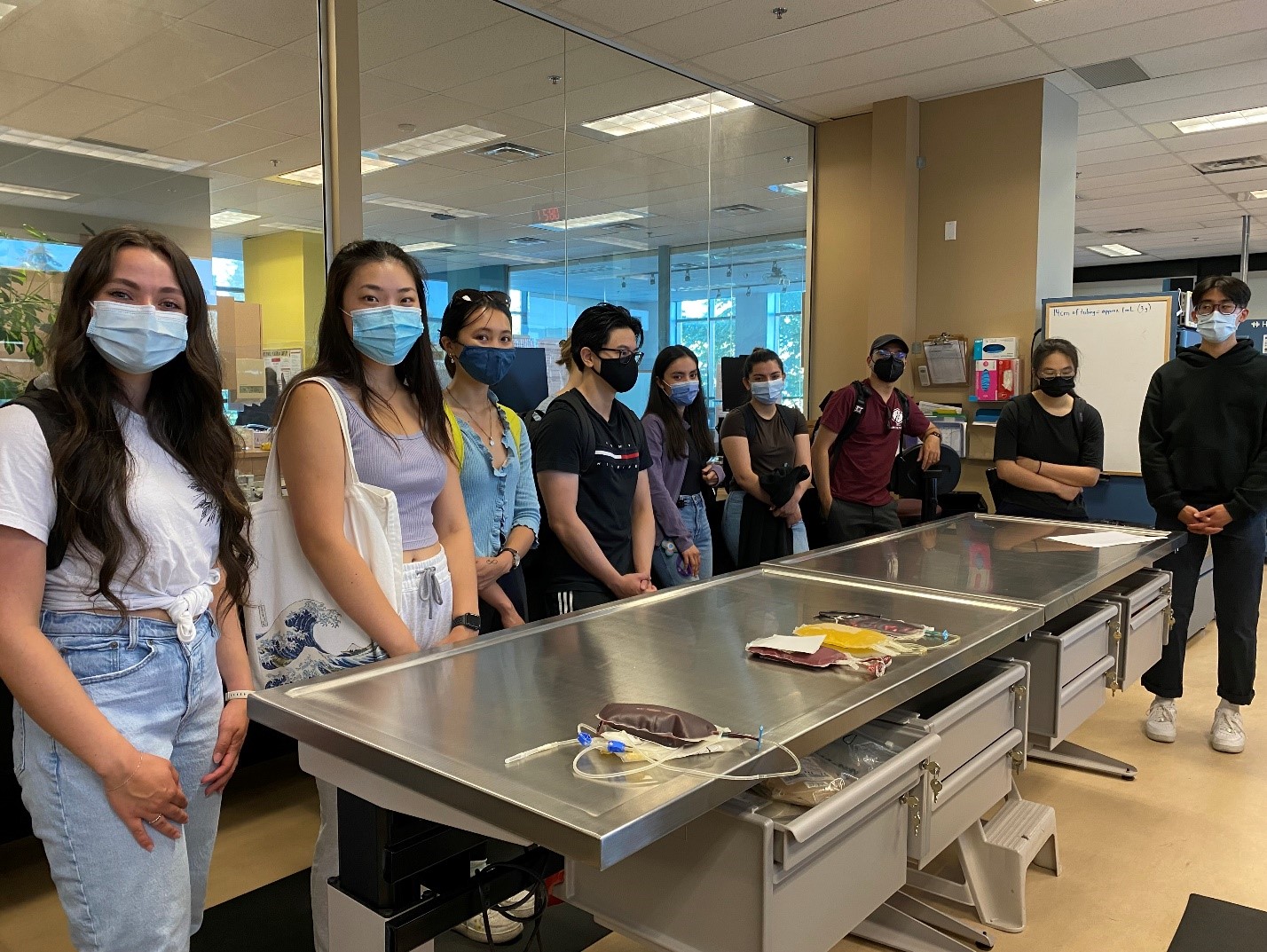
CBR Summer Students attending the tour of the netCAD Blood4Research Facility
Over the COVID-19 pandemic, the number of active blood donors dropped by 37,000 across the country, leaving Canada at its lowest donor number in a decade1. This not only creates a blood shortage crisis for patients in clinics, but also leads to a lack of biomaterials for scientists conducting blood research.
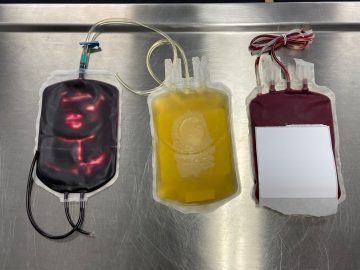
L – R: Platelet buffy coat, plasma, and red blood cells after the separation of whole blood components.
The netCAD Blood4Research Facility helps provide these important biomaterials and blood sources for important research. What exactly is netCAD? Part of the Canadian Blood Services Medical Affairs and Innovation division, it is located at the University of British Columbia (UBC), and produces high quality and prepared blood products for scientists and research institutions.
On August 9th, 2022, our cohort of 12 Centre for Blood Research (CBR) summer students toured the netCAD Blood4Research Facility, to learn more about what they do and how their work benefits scientists and patients alike.
Guided by Le Lam, an experienced coordinator, and Emmanuel Zurbano, a Development Assistant of over 10 years of lab experience, the facility staff showed us the detailed blood storage process, and how blood components are separated for research purposes. Specifically, they showed us how whole blood – which contains red blood cells, white blood cells, plasma and platelets – is separated into its different components. They also demonstrated how they test for bacterial contaminants in blood, to continue keeping our blood supply safe.
First, the staff placed blood products in a centrifuge. This allowed the blood to separate into layers: heavier hematocrit at the bottom, with platelets (in a buffy coat) on top, and plasma near the top of the blood bag. Using a blood component extractor, the red blood cells, platelet buffy-coat, and plasma are then separated into three different bags.
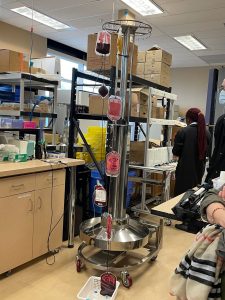
Four bags of buffy coats are pooled to make a pooled buffy coat. Residual platelets are flushed out by a bag of yellow plasma, located on the top rack.
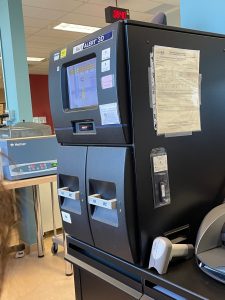
The bacT incubation machine, which tests for microbial contaminants in platelets that are intended for use in clinical settings.
Four buffy coat bags from different donors are then connected in a chain, to create what is called a pooled buffy coat. After the pooled buffy coat is centrifuged, the platelets reside in the top layer and residual red blood cells are at the bottom. The platelets are then extracted through a filter to remove white blood cells, and the residual red blood cells are discarded.
Generally, whole blood must be processed into individual components within 1 to 3 days, depending on the components being produced and the temperature during processing. Red blood cells have a shelf-life around 42 days, while platelets can only last for 5 to 7 days before they have to be discared2. This is why blood separation is crucial: it not only provides us with different blood products for different uses, but also lets us follow storage safety guidelines that are specific to each component.
Next, we learned about bacT testing, a process where platelets are tested for active bacterial contaminants. It’s an important aspect of quality control and ensuring patient safety, and is conducted on an as-needed basis for research. Platelets that undergo bacT testing are used in hospital settings, while the other blood products in the netCAD facility are prepared for research purposes.
We also observed another blood donation process, called apheresis, in real time. Unlike whole blood donation, where all components of your blood are collected and later separated, only specific blood components are collected during apheresis thanks to a special instrument used for apheresis, located in the donation clinic!
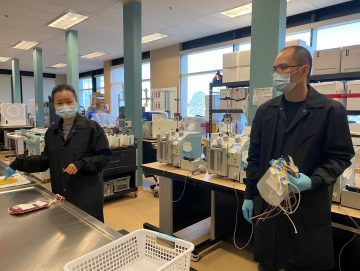
netCAD staff providing a demonstration for CBR Summer Students
From this trip, we learned about the intricate processes behind blood donation, how blood is separated into different components, and different ways that you can donate blood products. We also learned how donating blood for research differs from donating blood for clinical use; the first has fewer restrictions on who can be a donor, whereas the latter has stricter requirements because it is more focused on patient safety. This educational trip taught us so much about blood donations for research, and also about the importance of blood donations on a broader scale.
We would like to extend a big thank you to Dr. Peter Schubert, Le Lam, Emmanuel Zurbano, and all the netCAD staff, as well as Dr. Dana Devine, CBR Director, and Dr. Parvin Bolourani, CBR Education Program Manager, for this opportunity!
References
1 Alhmidi, M., and Sharp, M. (2022, August 9). Canadian Blood Services sends callout for donors in face of collection challenges. Canada’s National Observer. Retrieved August 19, 2022, from https://www.nationalobserver.com/2022/08/09/news/canadian-blood-services-callout-donors-collection-challenges
2 Blood components. Plasma, Platelets and Whole Blood | Red Cross Blood Services. (n.d.). Retrieved August 19, 2022, from https://www.redcrossblood.org/donate-blood/how-to-donate/types-of-blood-donations/blood-components.html


